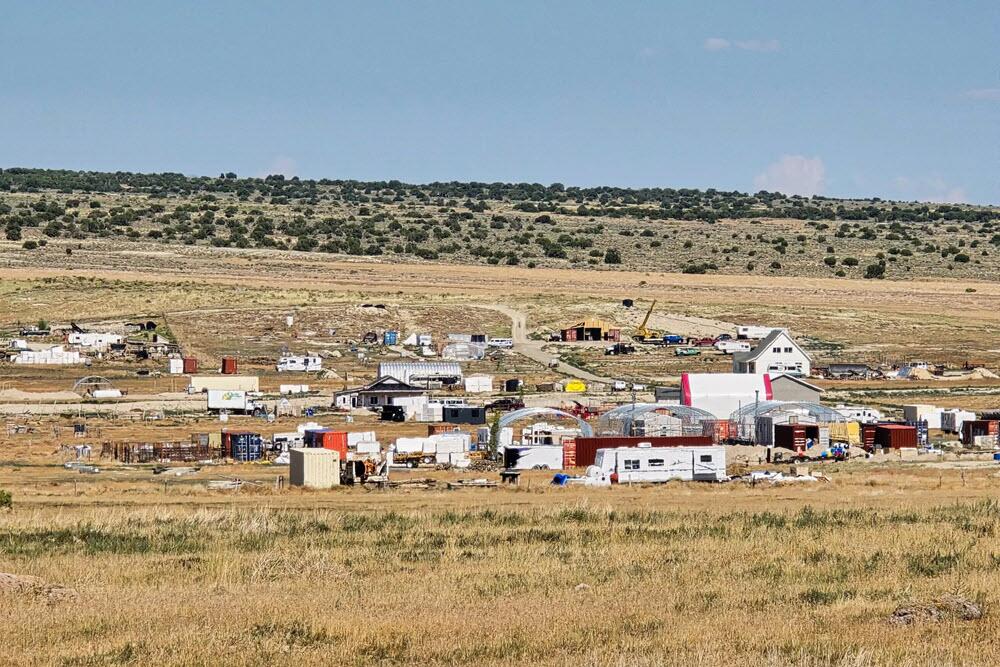 By Allan Stein of The Epoch Times
By Allan Stein of The Epoch Times
The big pickup truck went rolling down the dirt road, kicking up dust as Phil Gleason drove past workmen in hardhats and yellow vests digging a well for a new solar-powered home.
Miles away from any strip mall or cookie-cutter subdivision, the off-grid community known as Operation Self-Reliance bloomed with housing construction in the Utah desert.
“Think of all the dependencies when we’re in the cities,” said Mr. Gleason, 74, the community’s founder. “We have to drink the water they give us. We have to deal with trash pickup and pesticides.”
“I’m not saying it’s all bad. It wasn’t what I wanted. I needed to do something else.”
Operation Self-Reliance is both a plan of action and a work in progress, Mr. Gleason said with pride. It is a trumpet call for people yearning to break free of the bonds of city life.
Years ago, Mr. Gleason envisioned such a place for like-minded people, built on the time-honored idea of “sustainable self-sufficiency” like the early settlers.
It would be a place where people could live closer to nature, feel safe, raise families, and grow food.
The initial challenge was that “essentially, we had no money,” Mr. Gleason said. “We had no land. We just had a concept.”
But it was a valid concept nonetheless, he said—one based on solid principles of individual self-sufficiency and years of detailed research.
In 2018, Mr. Gleason presented his idea at a boating party on Lake Powell. Three guests stepped forward and offered to invest in the project.
After months of searching for the right place to build, Mr. Gleason discovered a 1,240-acre property was up for sale in a remote location about 100 miles south of Salt Lake City.
The land had once been a working farm used for growing corn, barley, winter wheat, and alfalfa, but it now mainly lay fallow, waiting for someone to infuse it with new life.
Around the middle of 2019, Mr. Gleason broke ground on the project, and the first few homesteaders moved in.
Today, there are 140 people in 50 families—75 of them children—living off the grid in passive solarized homes made out of brick, concrete, or compressed blocks of earth to enhance self-sufficient energy for homes.
When fully built, the model community will accommodate more than 200 homesteads, each with a two-acre plot for raising animals and growing fruits and vegetables.
“We’re building a self-reliant community of agricultural producers,” Mr. Gleason told The Epoch Times. “Part of the agreement is they’ll become agricultural producers.”
Becoming a producer could be as simple as having a small garden, he said.
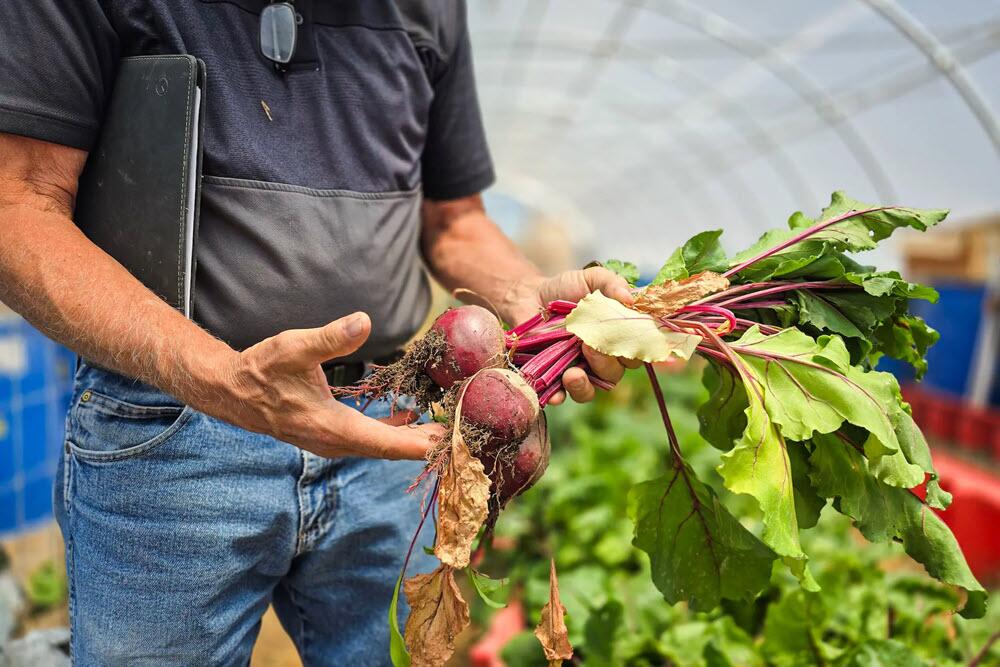
“You could have a greenhouse. But you’ll need the infrastructure. If you’ve got a one-foot garden and a tree, you’re an agricultural producer.”
However, before joining the community, each prospective homesteader must agree to a set of terms and conditions, the most important of which is developing a three-year transition plan for using their two acres productively.
On that small plot of land, they will agree to build a minimum 600-square-foot passive solar house, barn, greenhouse, freshwater well, and sanitation system approved by the local health department.
Mr. Gleason said the price of a two-acre parcel is $25,000; it costs about $200,000 on average to develop fully in alignment with the contract.
Even so, the contract does not allow for simply purchasing the land and locating a recreational vehicle. The aim is to build a community of permanent homes for agriculture.
“We’re more like gardeners. We’re not farmers,” said Jesse Fisher, the community’s social media and events organizer. “We encourage everyone to have their little cottage industry.”
Unlike survivalists or “preppers,” estimated at some 20 million strong, Operation Self Reliance isn’t waiting for doomsday or interested in riding out the apocalypse. It’s about immersing oneself in a self-contained and sustainable community as a way of life, Mr. Gleason said.
“We’re not preppers but we lean in that direction,” he said.
“Some of us don’t even like to be called preppers. The bulk of us—we want a sustainable lifestyle. You’ve got to work with the Earth.”
Still, “prepping is big business,” according to a recent Finder study.
It found that 29 percent of the adult population in the United States spent $11 billion on emergency supplies in 2022. The most commonly purchased items were food and water.
Two-fifths (40 percent) of Generation Z said they “spent money on doomsday supplies in the last 12 months,” and nearly the same number of Millennials (39 percent) said the same, according to the study.
The pandemic undoubtedly brought home the need for stockpiling supplies.
The Federal Emergency Management Agency reported a 50-percent jump in the number of people who were capable of surviving an emergency for 31 days from 2017 to 2020.

Though not a prepper in the cataclysmic sense, Mr. Gleason said he learned to appreciate the preparedness mindset half a century ago.
At the time, he was working as a building contractor in Idaho, living with his wife and three young daughters in a 29-foot recreational vehicle that ran on propane as winter was fast approaching.
“What we hadn’t counted on was that it had turned bitter cold. It was almost zero degrees outside and inside the RV. The water froze. The food froze,” he said.
He said the family had little experience with off-grid living, but they had an electric blanket.
“So we put the three babies between us and the electric blanket on us. We took other blankets and coats, put them on us, and turned the blanket on high. We were OK,” Mr. Gleason said.
At 3 a.m., the entire RV park suddenly lost power, leaving the family shivering in the cold.
“That experience rewired my brain,” Mr. Gleason said. “I wasn’t worried about world events. I was worried about keeping my babies warm and fed and able to drink. I felt helpless.”
That sense of utter vulnerability would turn into a wellspring of inspiration years later.
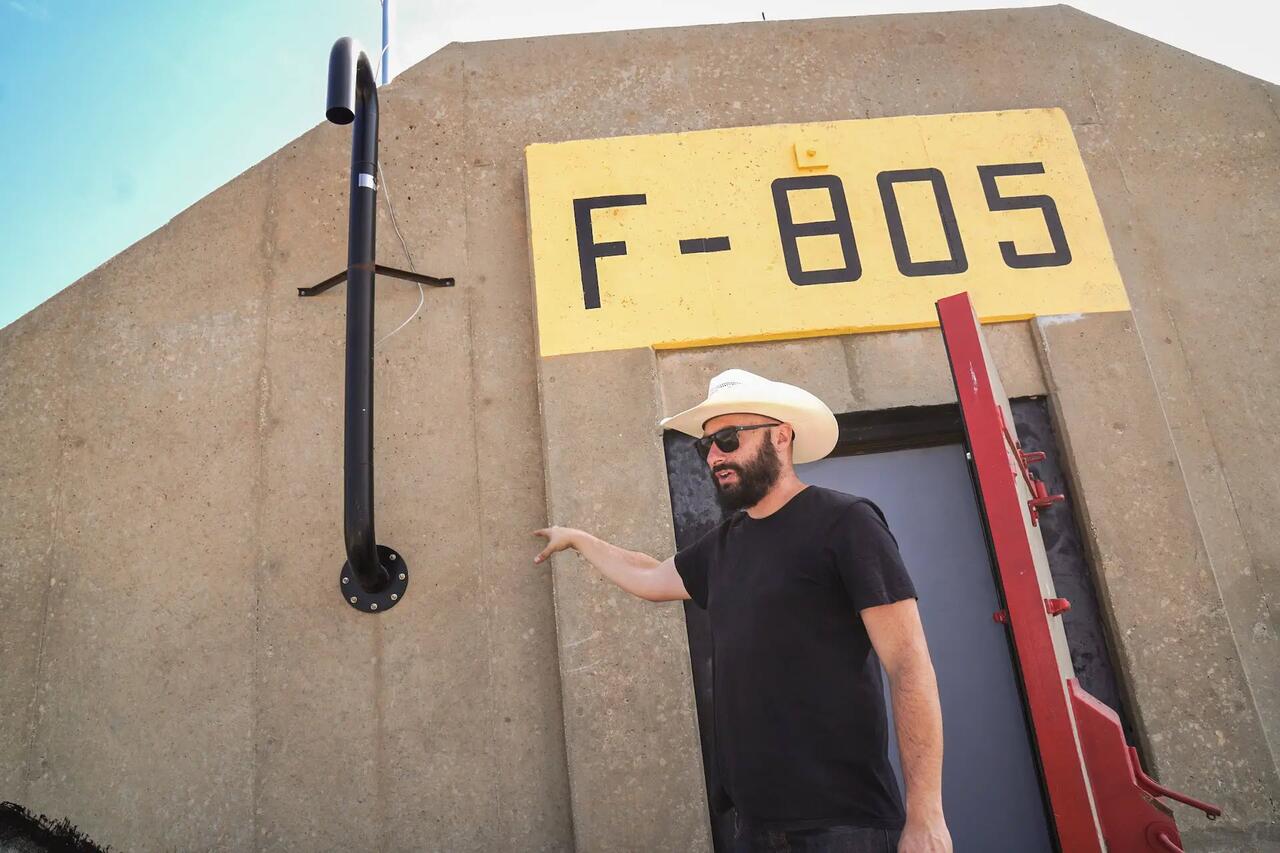
Mr. Gleason eventually came up with the idea of Operation Self-Reliance, an agricultural cooperative combining individual resources and talents for the good of the community.
Once an agricultural co-op surpasses 200 members, it can continue “generationally.”
And as rising crime and inflation make city life less tenable, he said, more people now view off-grid living as a workable alternative.
Among the more popular off-grid communities in the United States are Breitenbush Hot Springs in Oregon, Earthaven in North Carolina, and Dancing Rabbit Ecovillage in Missouri.
Vivos xPoint is another off-grid community comprised of 575 survival bunkers built by the military during World War II near the Black Hills area of South Dakota.
Mr. Gleason said he has plans to build another Operation Self-Reliance project on 1,300 rural acres located in Snowflake, Arizona.
He said the important thing is understanding what his off-grid community projects are not.
“We’re not a political statement,” he said. “We’re not a religious statement. We don’t have a militia.
“I think we’re pretty run-of-the-mill families. We’ve got contractors, engineers, educators, health care, professionals—a lot of IT people—salesmen, mechanics.”
Mark Miller, 65, is a retired federal government first responder who’s been living off the grid at Operation Self-Reliance in Utah for the past three years.
He and his wife built their 5,000-square-foot home out of compressed concrete form blocks. They are now working to create a park and gathering space for the entire community to enjoy.
“I like the idea of working for myself. Doing agriculture—maybe having a bed and breakfast out here,” Mr. Miller said. “It’s the freedom to be able to do what I want for my property.”
That includes having the freedom to grow as much food as he needs in a 100-by-300-foot garden—whether it’s corn, cantaloupe, watermelon, or in the greenhouse he plans to build.
“The dirt out here is terrible, so we have to bend it to our will … and make it work,” he said.
As a government first responder, Mr. Miller said he went to video document “man’s inhumanity to man” inside the athletic dome in New Orleans when Hurricane Katrina struck in 2005.
“And I mean, I saw the worst of the worst”—murders, rapes, looting, beatings, he said.
“And I’ve been everywhere you can think of.”
Far from the horrors of Katrina and American cities in decline, Mr. Miller said he finds peace in the company of neighbors at Operation Self-Reliance.
“Sometimes, I think they’re too close. Other times, I think they’re not close enough,” he said. “I’ve become friends with 50 families. I love every one of them.”
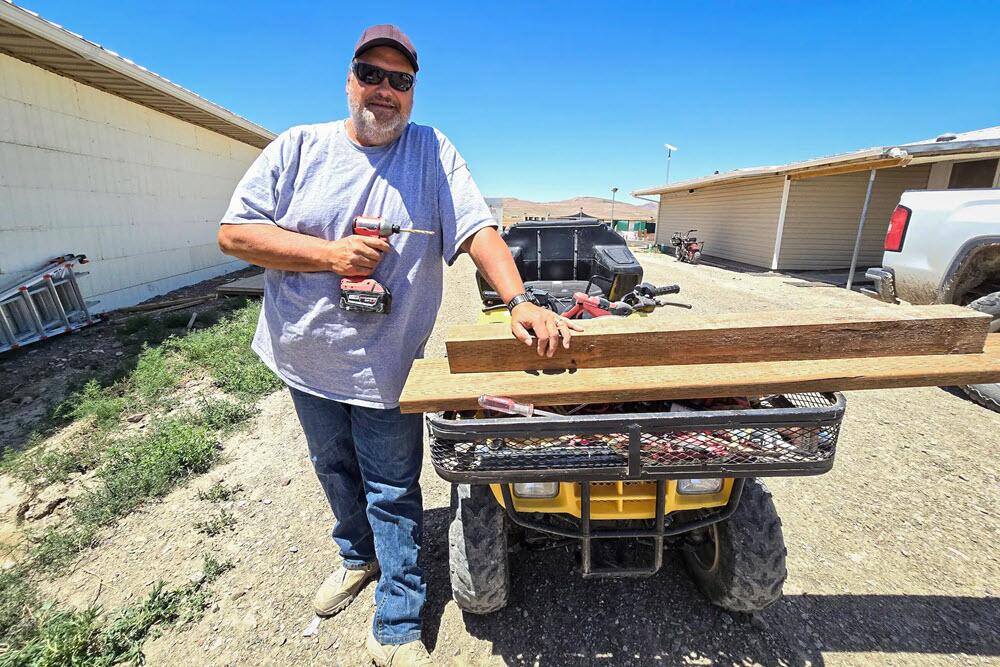
Tyler Ellingson, 35, is a software developer from Eagle Mountain, Utah, who recently decided that living off the grid at Operation Self-Reliance was the way to go.
He now spends every weekend building an 800-square-foot solarized home that he, his wife, and their three young children plan to move into next year.
At Eagle Mountain, the Ellingsons enjoy all the luxuries of modern city life—air conditioning, plumbing, a lovely house, and a nice yard. What they lack is “authenticity” from those around them.
“Everybody out here is authentic and willing to help,” Mr. Ellingson said. “If you get stuck in the snow, in town, you call somebody and pay them to help you. Out here, it’s your neighbors.”
He said that living in a small community of like-minded people is about building close relationships, even if it means suffering together.
“When you suffer with people, it builds unity—it builds community,” he said. “I have tons of neighbors” in Eagle Mountain. “We say ‘hi’ to each other. That’s the extent of it.”
Out here, in the middle of nowhere, surrounded by mountains and wild rye, his neighbors are more like an extended family.
“Out here, it’s all about the community working together to build something bigger than ourselves,” Mr. Ellingson said.

For Brandon Wilson, 44, a man of deep faith, “the short answer” for why he made the move to Operation Self-Reliance is, “God led us here.”
Though living off the grid intrigued him, he said, it was a distant cry from city life in South Weber, Utah, with his wife Shari and six young children.
“We had no intentions of moving,” said Mr. Wilson, a pediatric and family chiropractor in Ogden, Utah.
“We thought that would be our place for the next 40 years. In a lot of ways, it made little sense to us to come here. We felt strongly this was where we were supposed to go—especially after we found it. It became clear we have a purpose being here.”
He said that raising and homeschooling five boys and a daughter in a safe and wholesome environment is central to that purpose.
“Our culture has shifted away from that one-on-one interaction with our neighbors. Here, you have to rely on your neighbors because there are so many challenges to face,” Mr. Wilson said.
“Part of being out here is that it reintroduces kids to boredom. They’ve got to create their fun.”
Along with the peace of mind the Wilsons enjoy, there is the improved physical health that comes with life in a small community of resilient people.
“We feel better being out here. It’s a lot calmer,” Mr. Wilson said.
Since October 2023, the Wilsons have been living in a temporary 300-square-foot “tiny house” at Operation Self-Reliance.
The plan is to build a 1,200-square-foot homestead out of blocks of compressed earth.
Mr. Wilson said he still maintains a chiropractic office in Ogden, driving nearly 200 miles to and from work three days a week.
At home, he loves being with his family and watching his children grow up in a world where material possessions are less important.
“There’s no traffic. You can actually see the stars out here—the Milky Way,” said his oldest son, Bron, 13.
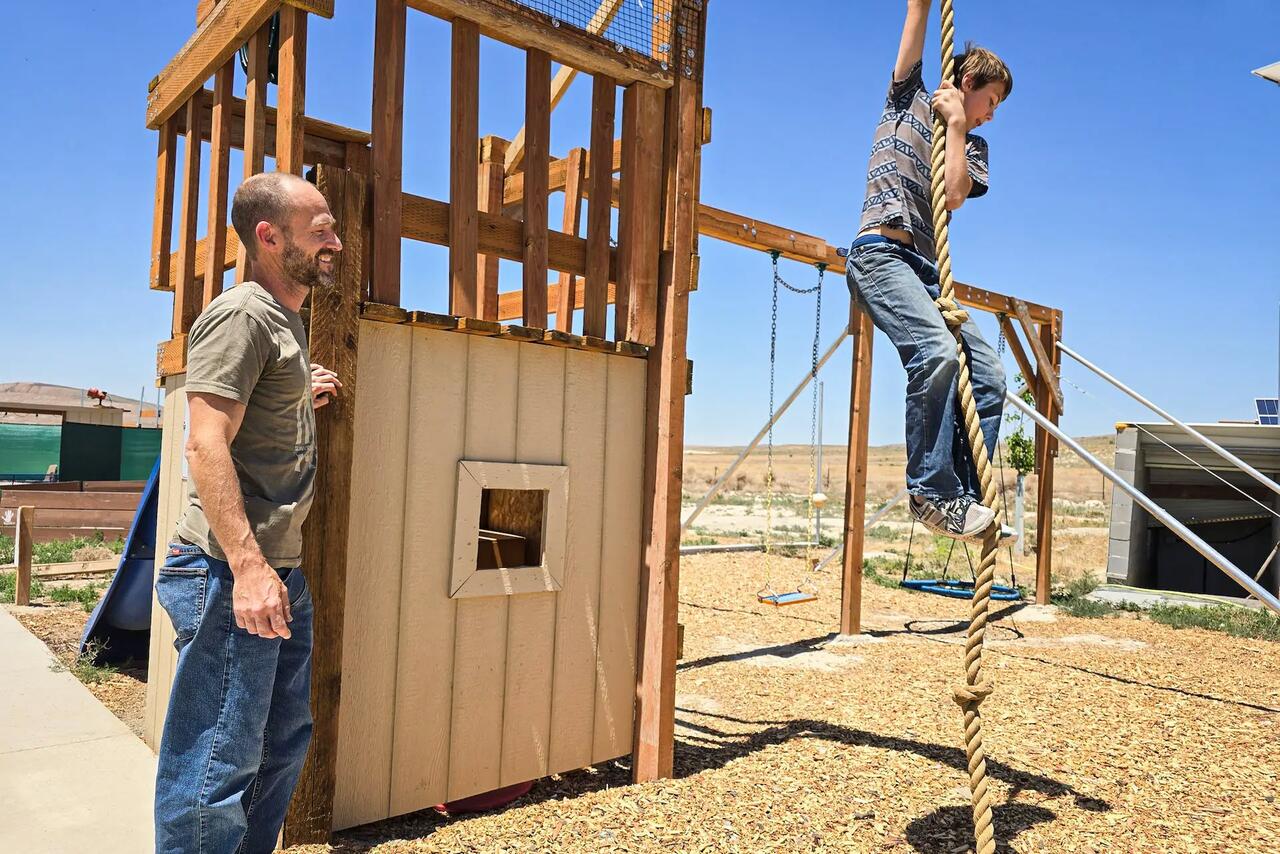
Tom and Kathy Barnes said they have no regrets about giving up 530 acres of agriculturally productive land in Payson, Utah, to work on just two acres at Operation Self-Reliance.
The couple now grows fruit trees and raises pigs, turkeys, chickens, and goats, living on the bounty in relative comfort.
“We had a lifestyle like this on 530 acres,” Mr. Barnes said. “This is two acres, so we downsized. We decided it was better to be out here.”
On their tiny parcel, the couple built their 3,000-square-foot solarized home, a red barn, and 17 raised garden boxes.
“Hopefully, we’re going to get citrus in this greenhouse. These grow boxes alone can grow what you want,” Mr. Barnes said.
How much food can they grow?
“All we need,” Mr. Barnes said.
“Plus some,” Mrs. Barnes added.
“It was a lifestyle choice,” she said. “We have a goat to milk every day—not too bad.”
One advantage of living off the grid is “people, people, people,” Mr. Barnes said. “The project is the community.”
“For us, this is not intimidating. We understood the principles” of living off the grid.
Another upside is having no monthly utility bill thanks to the 4,000-watt solar power array the couple had installed.
Mr. Barnes said that solar power alone is enough to run two freezers, two refrigerators, and two air conditioning units, with plenty of wattage to spare.
“So far, I’ve already covered $6,700 in the last 18 months,” he said. “It’s not going to take long to pay off the $35,000 cost of solar panel installation.

A short drive up the dirt road, Rebecca and Bill Sampson, formerly of Colorado Springs, Colorado, are in the process of building their new home.
“We’re going to build our house out of stabilized compressed earth block,” Mrs. Sampson said.
Recently married, the Sampson’s had been looking to move into a more rural setting to escape the “craziness” of the city.
“We were looking at possibilities. My niece sent me the information about here,” Mrs. Sampson said. “As we contemplated it and prayed about it, it seemed like the right thing to do.”
“If we want to get into the state of the world, I feel so grateful to have been led out of the cities. I think the cities are going absolutely crazy.”
Mrs. Sampson said there’s a definite learning curve to growing fruits and vegetables inside her new greenhouse.
Continue reading at The Epoch Times
Sourced from ZeroHedge


